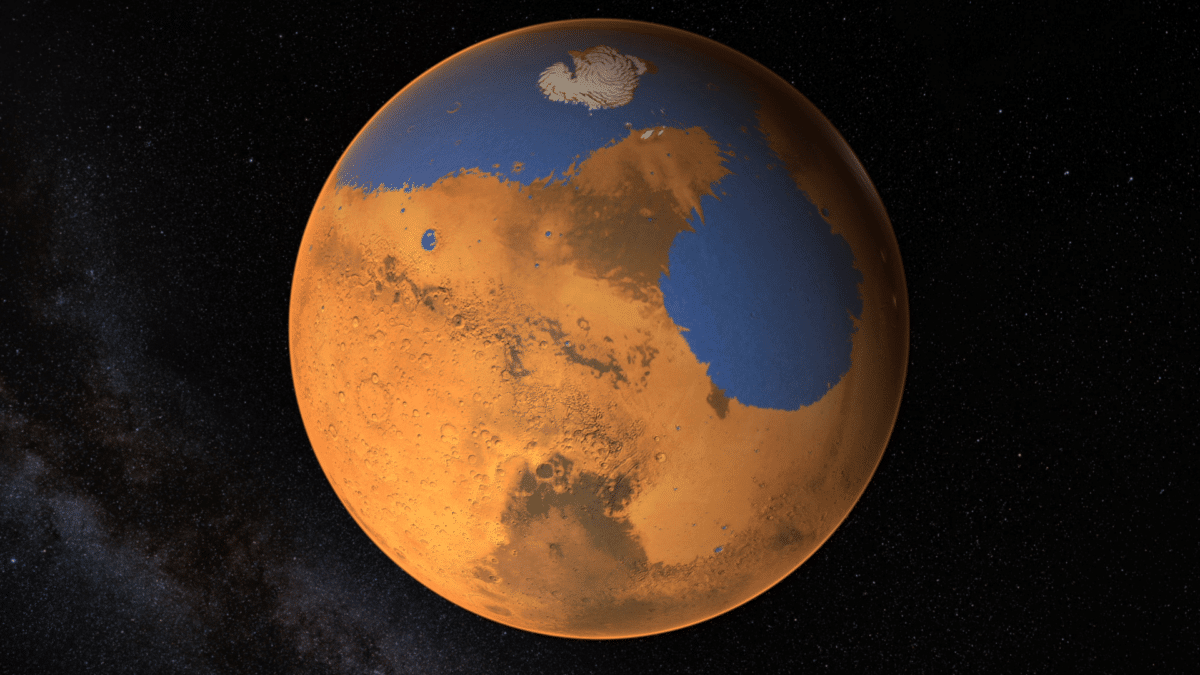
Lydia Amazouz Published on March 30, 2025
Collected at: https://dailygalaxy.com/2025/03/scientists-massive-water-reservoir-on-mars/
A massive underground stash of water has just been discovered beneath one of Mars’s most enigmatic regions—the Medusae Fossae Formation—shedding new light on the Red Planet’s hidden potential. Buried nearly two miles below the surface, this ice-rich deposit may be the largest non-polar water reservoir ever detected on Mars. The findings, published in Geophysical Research Letters, could transform how scientists approach the search for past habitability, future exploration, and Mars’s long-lost climate history.
A Deep Freeze Beneath the Martian Dust
The Medusae Fossae Formation is one of Mars’s most enigmatic regions, lying along the boundary between the planet’s smooth northern lowlands and rugged southern highlands. Long suspected of hiding more than just dust and ash, the region has now been revealed to harbor thick subsurface ice layers beneath its wind-sculpted ridges.
“We’ve explored the MFF again using newer data from Mars Express’s MARSIS radar, and found the deposits to be even thicker than we thought—up to 2.2 miles,” said Thomas Watters of the Smithsonian Institution, lead author of the study.
Watters and his team believe the radar signals strongly resemble those observed over Mars’s polar caps, where the presence of ice has already been confirmed.

Enough Water to Transform Mars
If fully melted, the volume of ice trapped beneath the MFF could cover the entire planet with 5 to 9 feet of water, according to researchers. That’s roughly equivalent to the volume of Earth’s Red Sea—an astonishing amount of water in a region that was previously thought to be mostly dry.
This level of subsurface hydration, if verified, would make the MFF the most significant non-polar water deposit on the planet—opening up new possibilities for long-term exploration, in-situ resource utilization, and potentially even terraforming concepts.
Challenging Old Theories About Martian Geology
For decades, scientists debated whether the MFF was made up primarily of windblown dust, volcanic ash, or other dry sediments. But as Andrea Cicchetti of Italy’s National Institute for Astrophysics pointed out, the radar data now tell a different story.
“If the MFF was simply a giant pile of dust, we’d expect it to become compacted under its own weight,” Cicchetti said. “That would create something far denser than what we actually see with MARSIS. And when we modeled how different ice-free materials would behave, nothing matched. We need ice.”
This finding not only changes what scientists thought the MFF was made of—it reframes the geological timeline of how and when water might have existed in Mars’s equatorial regions.
Why Equatorial Ice Matters for Exploration
Mars’s poles are rich in ice, but they’re inhospitable for human landings due to harsh terrain and energy challenges. Discovering such abundant water resources near the equator—a preferred target for future crewed missions—gives engineers and scientists a potential strategic asset.
According to Colin Wilson, ESA project scientist for Mars Express and the ExoMars Trace Gas Orbiter, this could be crucial: “The MFF deposits, buried under extensive dust layers, remain out of reach for the time being. Yet, each discovery of Martian ice enriches our understanding of the planet’s hydrological history and current water distribution.”
A Climate Mystery Beneath the Surface
Beyond its implications for exploration, the existence of deep equatorial ice raises new questions about Mars’s climate history. Why was water able to collect and remain preserved in such massive quantities far from the poles? What was Mars like when this ice formed? And could this ice harbor signs of ancient microbial life?
“This latest analysis challenges our understanding of the Medusae Fossae Formation and raises as many questions as answers,” Wilson added.
The layered structure—ice beneath a protective cap of dust or ash—may have preserved water for millions of years, acting as a time capsule from a wetter, more dynamic Mars.

Leave a Reply